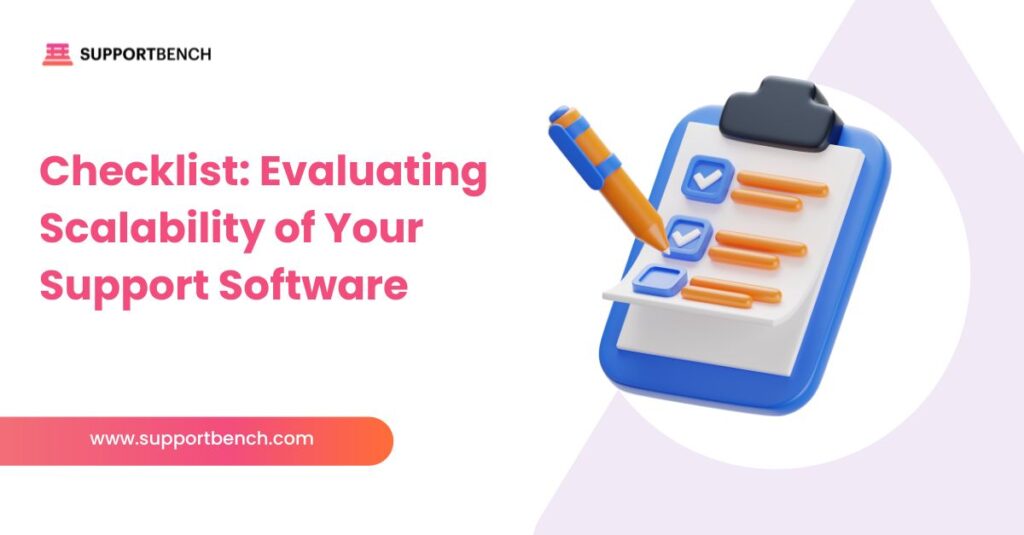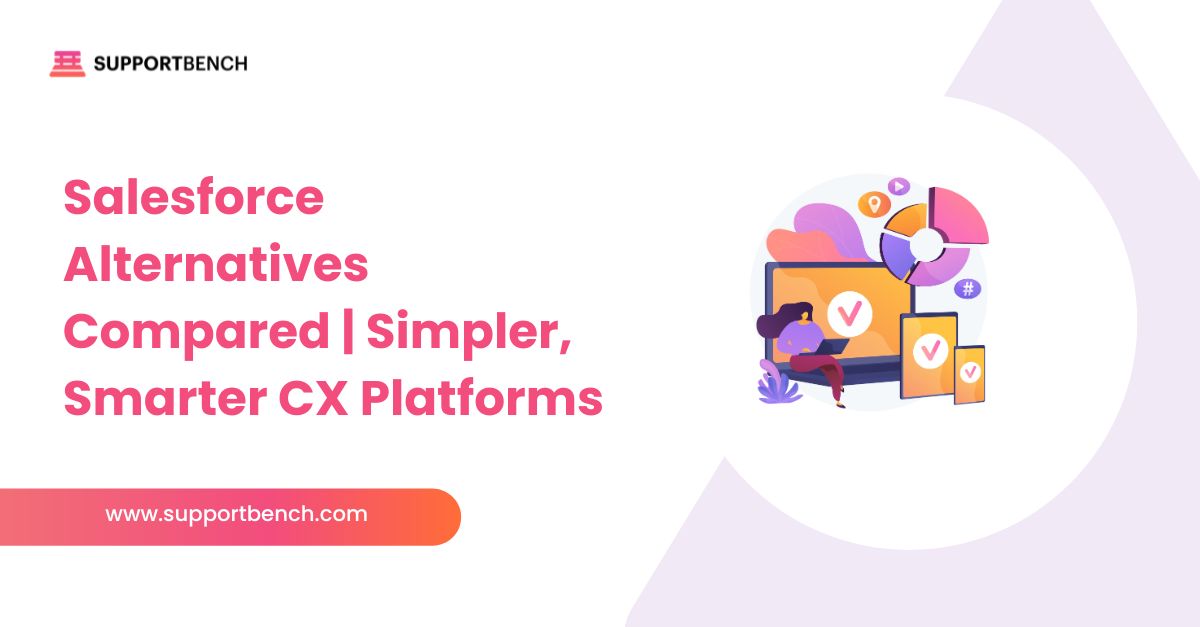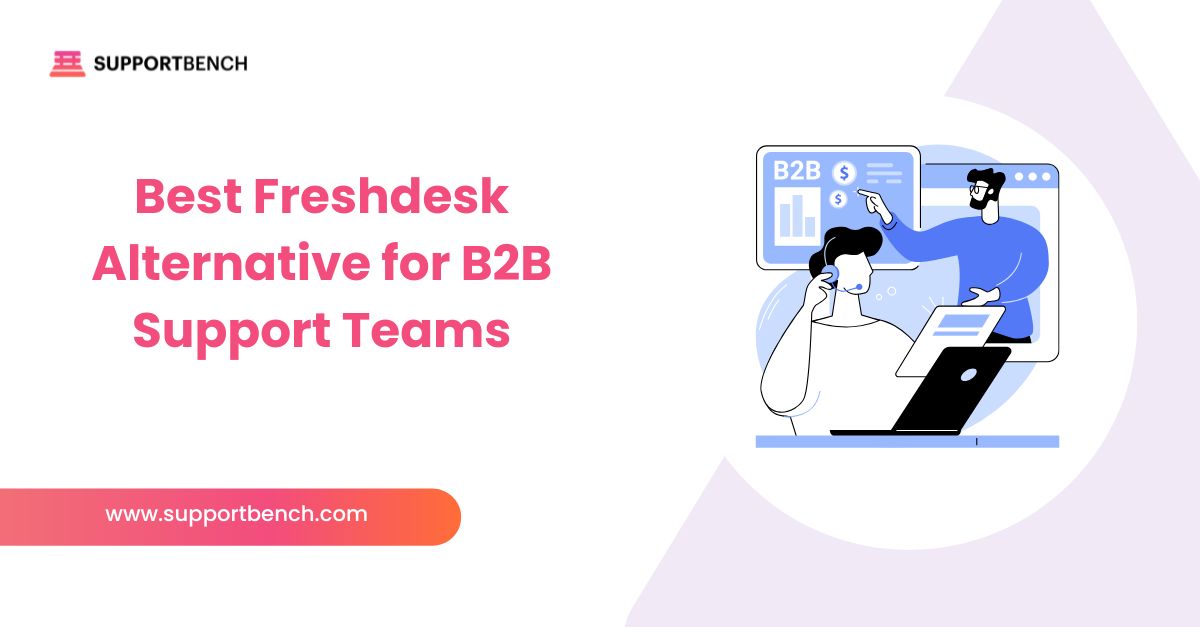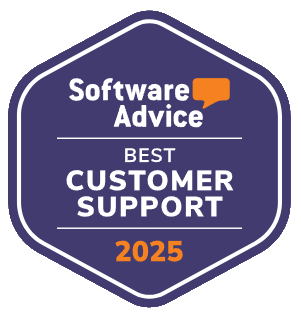As your business grows, so do the demands on your customer support team. More customers, more questions, more channels, and higher expectations mean your software must keep pace.
The software that worked well for a small team might now be slowing things down. Scalability isn’t just about speed—it’s about handling more tasks, complex issues, and integrations without needing a full replacement.
This checklist helps you evaluate whether your current AI-powered customer support system can scale reliably and efficiently, focusing on real-world criteria that matter as your team grows.
At a Glance:
✔ Check if your support software can handle increased user demand without slowing down.
✔ Understand and test both vertical and horizontal scaling methods.
✔ Monitor key performance metrics like response times, resource usage, and error rates during growth.
✔ Consider security, cost, and ease of future upgrades when scaling.
✔ Use a clear checklist to confidently assess if your support system is ready for expansion.
1. Understand Scalability Types
Support systems can grow in two main ways:
- Vertical Scaling (Scale Up): Adding more CPU, memory, or storage to a single server or instance to handle increased load. It’s simpler but has limits.
- Horizontal Scaling (Scale Out): Adding more instances—servers or containers—behind a load balancer to distribute traffic. This approach offers flexibility, redundancy, and fault tolerance.
Both methods have pros and cons. Vertical scaling can quickly add power but may hit capacity ceilings. Horizontal scaling provides better fault tolerance and adaptability, essential for growing teams.
Understanding these options helps you choose the right strategy to prepare your support software for the future.
2. Define Growth Scenarios
Before testing, map out how your support demands might grow. Consider questions like:
- Will user sessions double in the next year?
- Could ticket volume spike during peak seasons or business expansions?
- How might new communication channels or products affect workload?
Having clear, realistic growth scenarios provides a framework to assess whether your support software can handle future demands without slowing down or breaking.
3. Load and Performance Testing
Design structured tests that simulate different traffic levels: low, medium, and high demand. Use virtual user simulation tools to mimic real customer interactions with your support software.
Measure key performance indicators such as:
- How many tickets the system processes per second
- Response times under varying loads
Run these tests in consistent environments to accurately determine your system’s scalability limits.

4. Monitor Key Metrics
To understand how well your support system handles growth, it’s crucial to monitor key metrics. Focus on:
- Response time and latency — these should remain stable even under heavy load
- Throughput — the number of transactions your system processes per second
- CPU, memory, and network usage at various load levels
- Error rates — keep these as low as possible
Use dashboards and alerts to stay informed in real time, enabling quick responses to emerging issues.
5. Architecture and Modularity
A scalable support system has a modular design. Separate components—like ticketing, reporting, and integrations—should function independently, allowing upgrades without affecting the entire system.
Adopt microservices architecture: small, self-contained services that isolate failures and ensure other parts keep running smoothly.
Incorporate load balancers to distribute work evenly across resources, preventing any single component from becoming a bottleneck or crashing.

6. Database Scaling Strategy
Database performance can bottleneck your entire support system. To scale effectively, consider:
- Scaling Up: Upgrade your server hardware for more power.
- Scaling Out: Distribute data across multiple servers using sharding or read replicas.
Always test query performance and optimize indexes before scaling. This ensures efficient use of resources without unnecessary costs or delays.
7. Caching and Offloading
Smart caching reduces the load on your system. Use in-memory caching tools like Redis or Memcached to store frequently requested data, speeding up response times.
Offload bulky files such as attachments and reports to external storage solutions like CDNs or blob storage. This frees up your database and servers, improving overall performance and reliability.
8. Infrastructure Flexibility
Build infrastructure that adapts automatically to changing demands. Use cloud-based auto-scaling to add or remove resources based on real-time traffic.
Support multiple deployment options—on-premise servers, virtual machines, containers, or serverless platforms—to fit your business needs.
Cloud-native solutions excel in elasticity, scaling smoothly while optimizing costs.
9. Monitoring, Alerting & SLOs
Evaluate if your vendor provides comprehensive monitoring for critical performance metrics. Ask if they offer:
- Real-time tracking of system health
- Automated alerts for threshold breaches like high CPU use or increased errors
Check whether they define Service Level Indicators (SLIs), Objectives (SLOs), and error budgets, especially if following Site Reliability Engineering (SRE) principles. These help maintain reliable service performance and uptime.
10. Reliability and Fault Tolerance
A scalable system should remain available under pressure by:
- Redundancy: Use active-active or active-passive setups across multiple regions to reroute traffic if one data center fails.
- Circuit Breakers: Automatically isolate failing components to prevent cascading failures and maintain overall system stability.
- Recovery Plans: Establish automated restarts, failover processes, and clear roles during incidents to minimize downtime and ensure quick recovery.
11. Security & Compliance Under Scale
As your support software grows, security and compliance must scale too. Ensure your system offers:
- Strong encryption
- Reliable user authentication
- Role-based access control (RBAC)
- Detailed audit logging
Maintain compliance with standards like HIPAA, PCI DSS, SOC 2, and GDPR, even during high usage and load.
12. Cost & Total Cost of Ownership (TCO)
Scaling your support software increases costs. Understand the differences between:
- Vertical scaling: Adding power to existing systems
- Horizontal scaling: Adding more systems to share the load
Also consider rising expenses for support, licensing, and staffing as usage grows. Always assess whether the benefits of scaling justify these investments.
13. Vendor Support and Roadmap
When choosing a vendor, evaluate how they handle growth:
- Do they support customers of similar size and volume to your business?
- What performance and scalability improvements are planned for the future?
- What support is available during periods of rapid growth?
Speaking with existing customers can provide insights beyond product demos.
14. Usability at Scale
Your support software should remain user-friendly as usage grows. Test for:
- Responsive interfaces under heavy load
- Quick, smooth performance for both individual tasks and full sessions
Ensuring usability at scale prevents user frustration and maintains productivity.

15. Future-Proofing and Extensibility
Evaluate how well your software supports future growth and changes:
- Does it follow API-first design principles?
- Does it support easy integration of plugins and extensions?
- Is the roadmap focused on microservices, headless architecture, and full cloud support?
These features ensure your investment stays adaptable as your business evolves.
Summary Checklist
Use this checklist to assess whether your support software can scale effectively as your business grows:
Area | Key Questions |
| Load Handling | Can it serve expected user growth without slowdowns? |
| Architecture | Is it modular, microservice-based, and load-balanced? |
| Data Layer | Does it have scalable databases with efficient queries, sharding, or replicas? |
| Caching | Is in-memory caching implemented? |
| Infrastructure | Does it support auto-scaling and cloud deployment? |
| Monitoring | Are dashboards, alerts, and error budgets defined? |
| Fault Tolerance | Are redundancy, circuit breakers, and recovery plans in place? |
| Security & Compliance | Is it robust and compliant at scale? |
| Cost | Does cost scale reasonably with growth? |
| Support | Does the vendor offer proven support and clear roadmaps? |
| Usability | Does the UI stay responsive under load? |
| Extensibility | Are APIs and plugins supported for future growth? |

Real-world Highlights: Impact in the Field
Successful scaling strategies rely on real-world validation. Here are examples of how leading organizations ensure their systems are ready for growth:
Applied AI Consulting: Testing for Growth Readiness
Applied AI Consulting tested an application managing millions of records. They identified and fixed bottlenecks early, enabling the system to handle up to 10 million records without performance issues.1
Google: Stress Testing Kubernetes Engine for Enterprise Scale
Google set clear performance goals and resource allocation to test Kubernetes Engine. This helped uncover bottlenecks and improve its ability to manage enterprise workloads efficiently.2
Conclusion
Evaluating your support software’s scalability is crucial—not just for today, but for future growth. A clear checklist covering design, testing, monitoring, security, costs, and usability helps ensure your system keeps pace as demands increase.
Often, readiness to scale matters more than new features. A scalable system lets you focus on delivering great customer support without interruptions.
Ready to ensure your support software grows seamlessly with your business? Explore how Supportbench’s scalable platform can help you manage growth effortlessly—book a free demo with Supportbench today.















